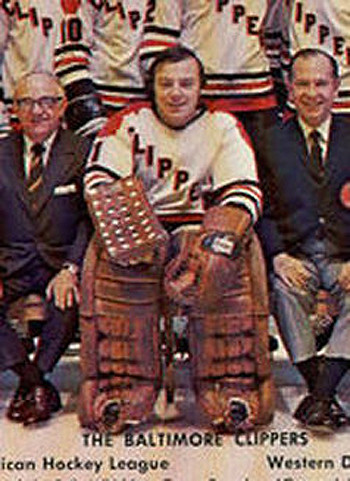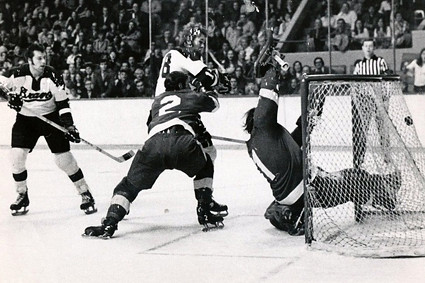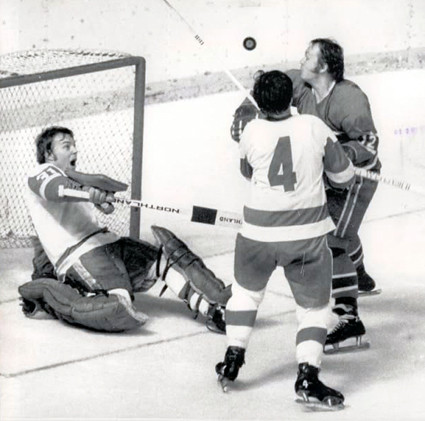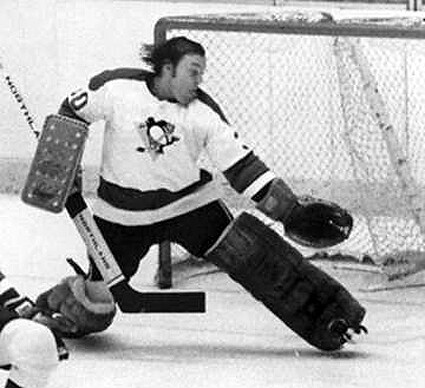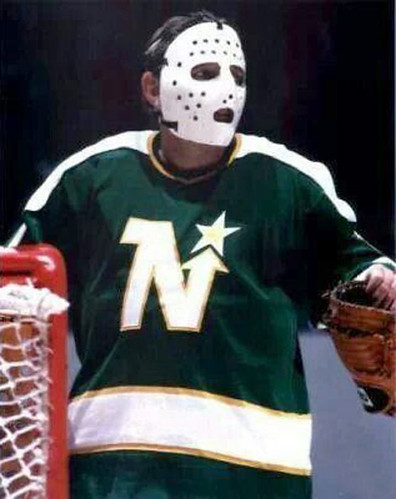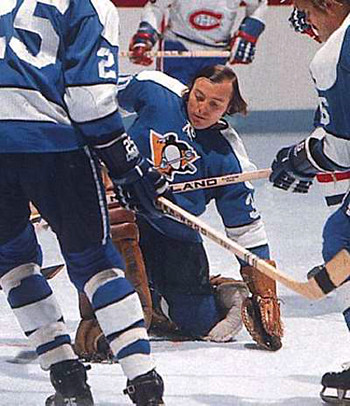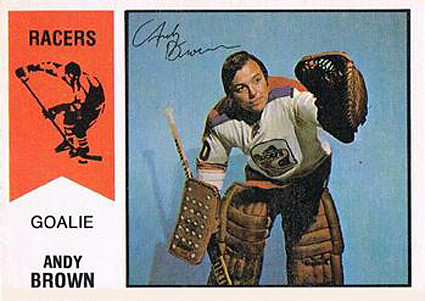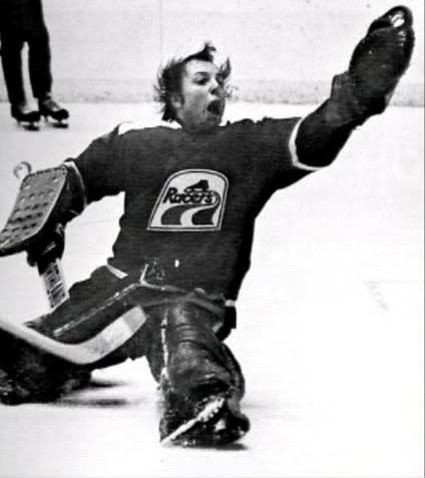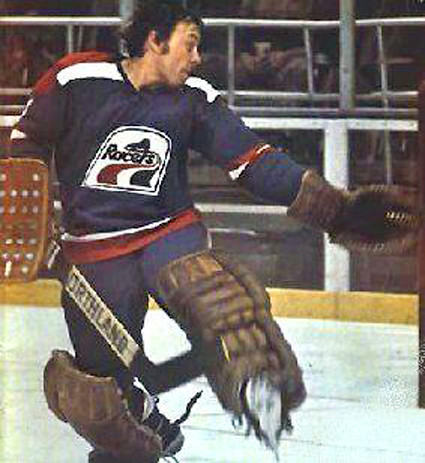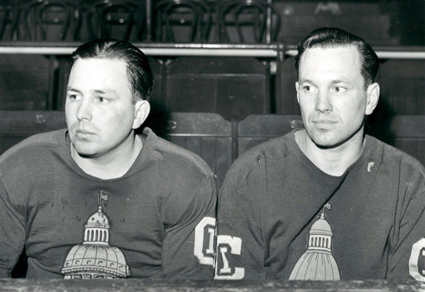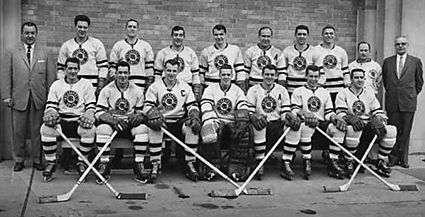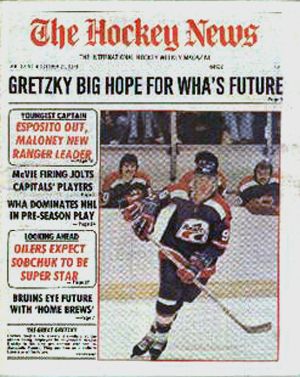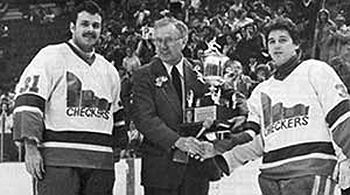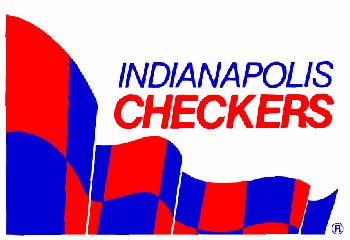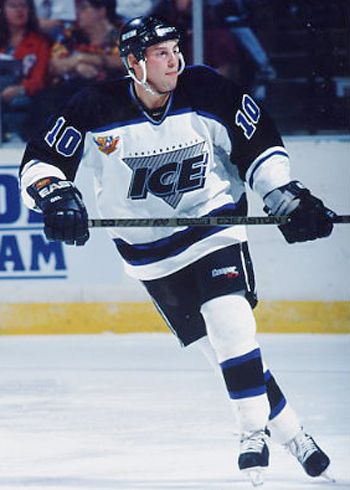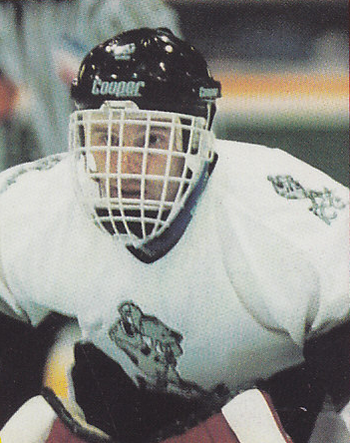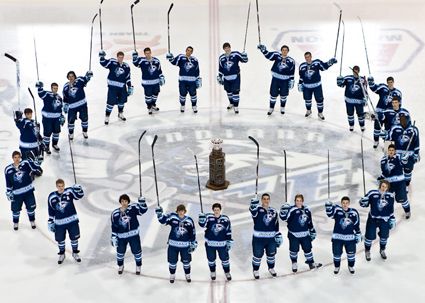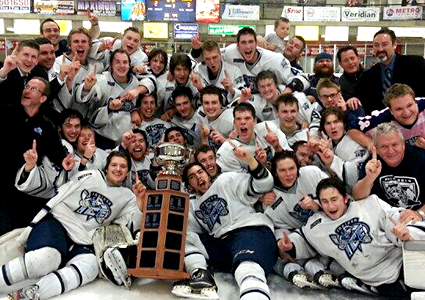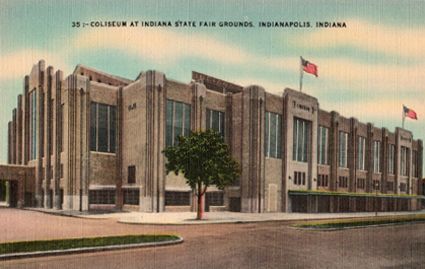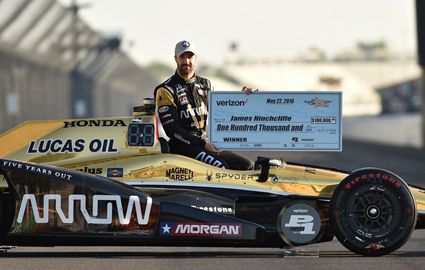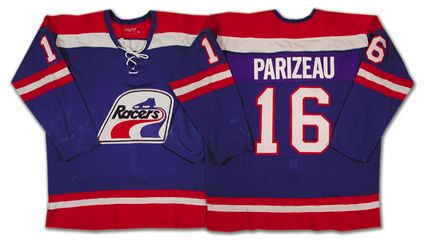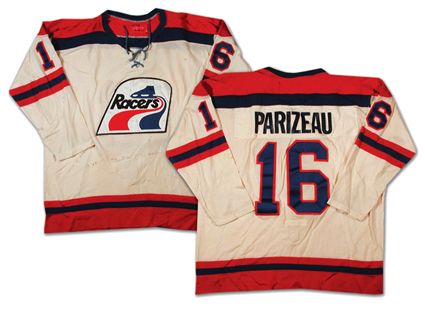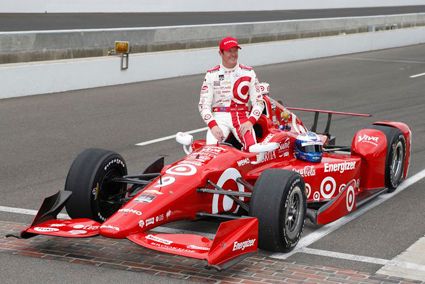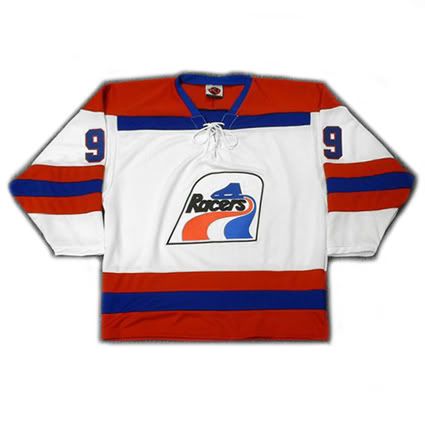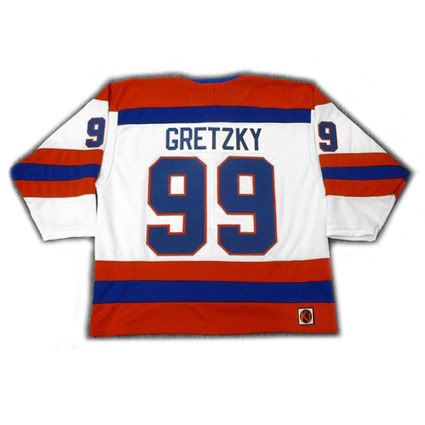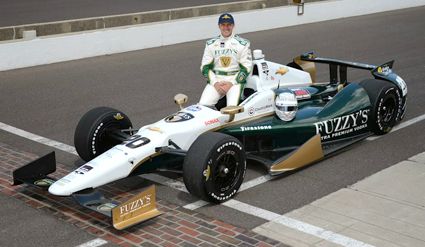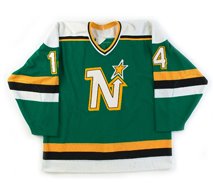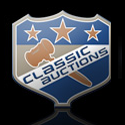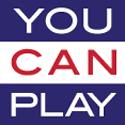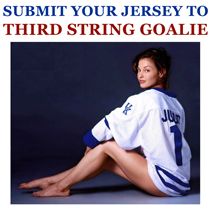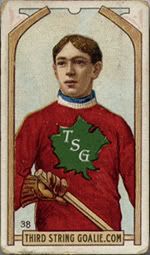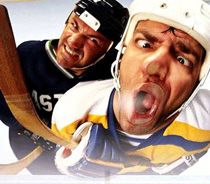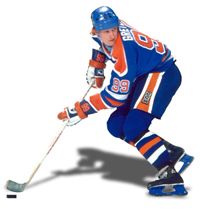His professional career began with the 1965-66 season when Brown played in 70 games while going 39-29-2 with the Johnstown Jets of the Eastern Hockey League. He was also loaned to the Baltimore Clippers of the American Hockey League as a one game emergency call up.
Brown was a member of the Long Island Ducks for the 1966-67 season, where as their number one goalie, he played in 45 games with a 23-19-3 record with three shutouts and a 3.07 goals against average.
He returned to Johnstown for the 1967-68 season where he played in every one of the Jets 72 games, winning 38 with 25 losses and 9 ties with 4 shutouts.
For the next three seasons, starting in 1968-69, Brown played for the Clippers in Baltimore as their number one goalie with his best season being the third and final one of 1970-71 when he played in 50 games with a 28-13-8 record with 4 shutouts and a 2.86 goals against average, the lowest of his professional career.
Considered the best goaltender in the AHL at the time, Brown was chosen by the Detroit Red Wings in the Inter-League Draft in June of 1971. He was assigned to the Tidewater Red Wings of the AHL for the 1971-72 season, but had a rough time of it, as evidenced by a dismal 4-16-1 record, a situation not helped by the weakest offense in the league combined with the second worst defense. Brown was sent down to the Fort Worth Red Wings of the Central Hockey League, where he fared better with a 9-4-3 mark in 16 games while posting a goals against average nearly 3/4 of a goal per game less.
Despite his struggles in Tidewater, Brown was called up to the NHL by Detroit for 10 games where he went 4-5-1. Despite masks having been worn by NHL goaltenders as far back as 1959 when Jacques Plante wore one in a game after being wounded during a game after being hit by a puck, by the 1971-72 season, Brown was an oddity, as he played without a mask now firmly in the age of the curved stick and the slapshot thanks to one Bobby Hull in particular.
During the early part of the 1972-73 season, Brown played with both the Fort Worth Wings of the CHL and 7 appearances for Detroit in the NHL, but on February 25, 1973, Brown was traded to the Pittsburgh Penguins. He played in 9 games for Pittsburgh over the final month of the season with a 3-4-2 record.
Brown led the Penguins in games that season with 36, ahead of Jim Rutherford (26 games) and Gary Inness (20) and Denis Herron (5). No goalie on Pittsburgh finished with a winning record that season and Brown was no exception, going 13-16-4.
Aside from Brown, the only other remaining holdout to not wear a mask was Gump Worsley of the Minnesota North Stars. Finally, at the age of 44, Worsley relented after 21 seasons and 855 games, wearing a mask for the final six games of his career at the end of the 1973-74 season, leaving Brown as the last goaltender to play without a mask.
The Penguins played their final game of their schedule on this date in 1974, a 6-3 road loss to the Atlanta Flames, which officially made Brown the last goalie to play without a mask in the NHL.
With the Penguins leaning toward a tandem of Rutherford and Herron, Brown took advantage of the option of joining the rival World Hockey Association, which came into existence for the 1972-73 season, creating many new jobs for hockey players, a far cry from 1966-67 when Brown was playing in Long Island in the EHL and there were roughly 12 jobs for goalies among the six NHL clubs. With the expansion of the NHL in 1967 to 12 teams, adding two more in 1970 and then up to 16 in 1972, the same year the WHA arrived with 12 teams of its own, there were now approximately 60 jobs for goalies compared to 12 just six years earlier.
Brown, still refusing to wear a mask, chose to sign with the Indianapolis Racers for the 1974-75 season. If he was looking for playing time, he got it, as he played in 52 games, his highest total since 1967-68, while logging 1,023 minutes more than he had the previous season. Unfortunately, the Racers were overmatched and finished a distant last in the WHA as Brown finished with a 15-35 record.
Teammate Michel Dion rose to the number one position for the 1975-76 season with 31 games, while Brown was limited 24 thanks to a pulled muscle in his back, while Leif Holmquist (19) and Jim Park (11) were also tried out as the solution to the Racers woes. Of note, Brown finished the season with an astounding 75 penalty minutes that season!
Brown returned to the Racers for one final season in 1976-77, but the Racers crease was a revolving door that season, with Dion (42 games), Park (31), Paul Hoganson (11), Brown (10) and Randy Burchell (5) all seeing time in goal for Indianapolis. Those with a keen eye for statistics will note that those games played all add up to 99 games in the Racers 81 games, meaning head coach Jacques Demers was not hesitant to yank his starter, as Indianapolis changed goalies in 18 games or more than one out of every five played.
While the NHL is known for its parochial stance on its place in the world of hockey, the WHA did actually play for seven seasons despite the NHL's dismissal of the entire existence of the rival league, and while nearly every mention of Brown being the last goalie to play without a mask in the NHL recognizes today, April 7th in 1974 as the date the last goalie played without a mask, he never did adopt one during his three seasons with Indianapolis through the 1976-77 season. Brown began the schedule playing in ten of the Racers first 14 games, he suffered a spinal injury which eventually led to his retirement at the age of 33, making November 10, 976 the date of the last professional goaltender to play without a mask.
Today's featured jersey is a 1976-77 Indianapolis Racers Andy Brown jersey. The Racers were formed for the 1974-75 season and played four seasons in the WHA before folding 25 games into their fifth season. They wore the same jersey style for their entire run, best remembered for being worn by Wayne Gretzky during his professional debut.

